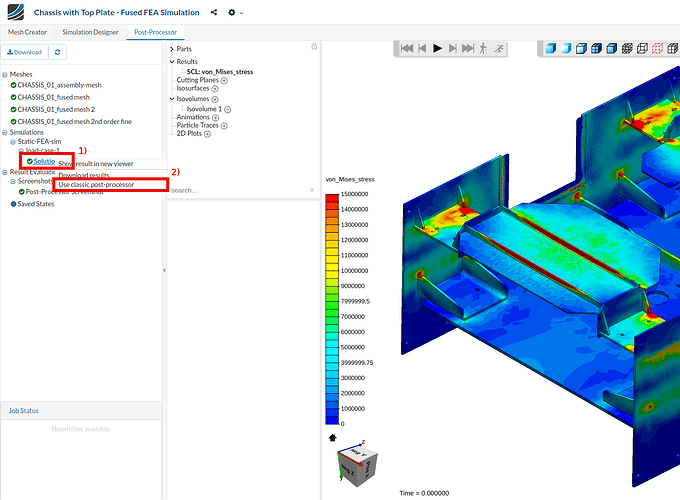SimScalers,
today, an improved integrated post-processor has been released, providing faster and more interactive mechanisms for visualization and interrogation of simulation results. Find a short overview in the first video and a couple of deep dives in some of the new functionality in the videos after
Faster Loading & Interaction
The new online post-processor improves performance over the old post processor, including speed to load, visualize and manipulate the data. The new experience is matching the robustness level of a desktop post-processing software with well equipped hardware.This is particularly important for our users, ensuring that both quick sanity checks on the setup and in depth post-processing can be done with as much ease as possible.
Probe results using direct selection
When inspecting results, it is often desirable to simply query the value of a field at a certain location, this is now possible in the new post processor by simply clicking on a surface location in which you desire the result. This can be used to ensure that a more complete understanding of the field is gained without having to invest time into creating complicated visualizations, and is useful in many applications including cuts through a heat source to understand surrounding temperatures, or surface representation of a building in wind load, gaining an understanding into surface pressures.
Iso-volumes and Iso-Surfaces
Iso-volumes and Iso surfaces are good for visualizing a 3D object based upon a fields scalar value. This is done by either selecting a value to create an iso-surface upon, or a range of values to create an iso-volume. This can be used extensively to visualize many applications including thermal plumes above a heat source using temperature, or wing tip vortex using vorticity.
Animate Results
Animations are great tools to visualize both transient datasets and steady state data sets a like. The animation feature allows the user to visualize a transient data set by choosing a start and end time, and resolution of the animation and animating with the current visualized state. It also allows the user to visualize streamlines over time for steady state results.
Improved Visualization Options
The new post processor also has some enhancements to colour maps, including the option to change between several different colour schemes and the ability to choose how many colour levels are seen. This will help in viewing multiple fields in the same visualization, which might have once been hard to display, for example, a surface pressure visualization can be presented using the traditional rainbow scheme, whilst streamlines coloured by velocity can be visualized using the thermal scheme, giving a clearer understanding of the results without confusion.
